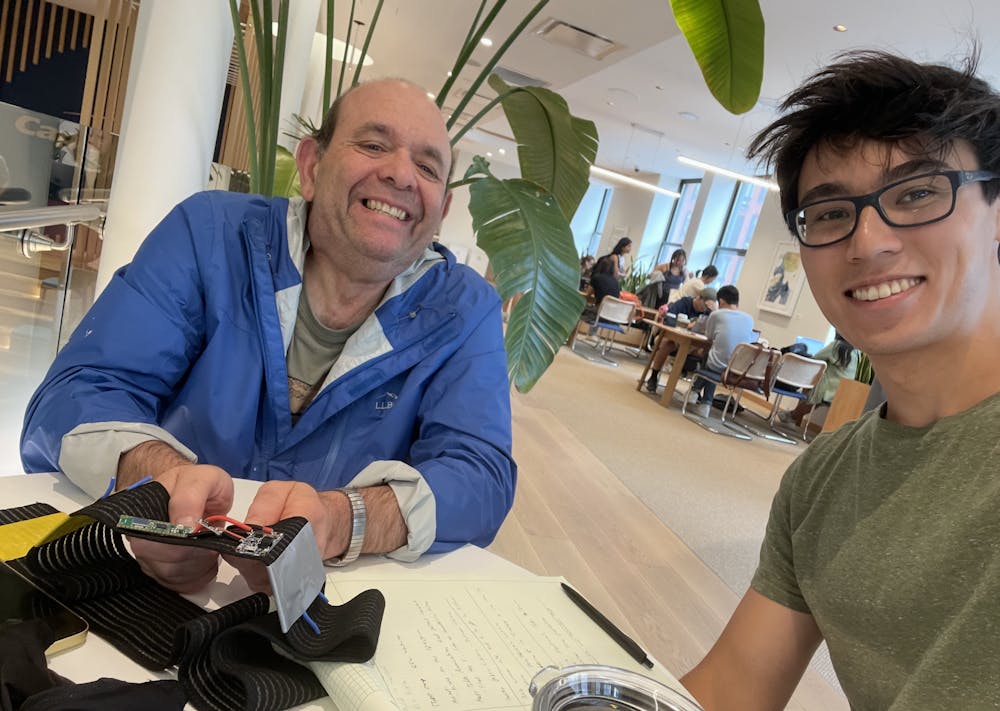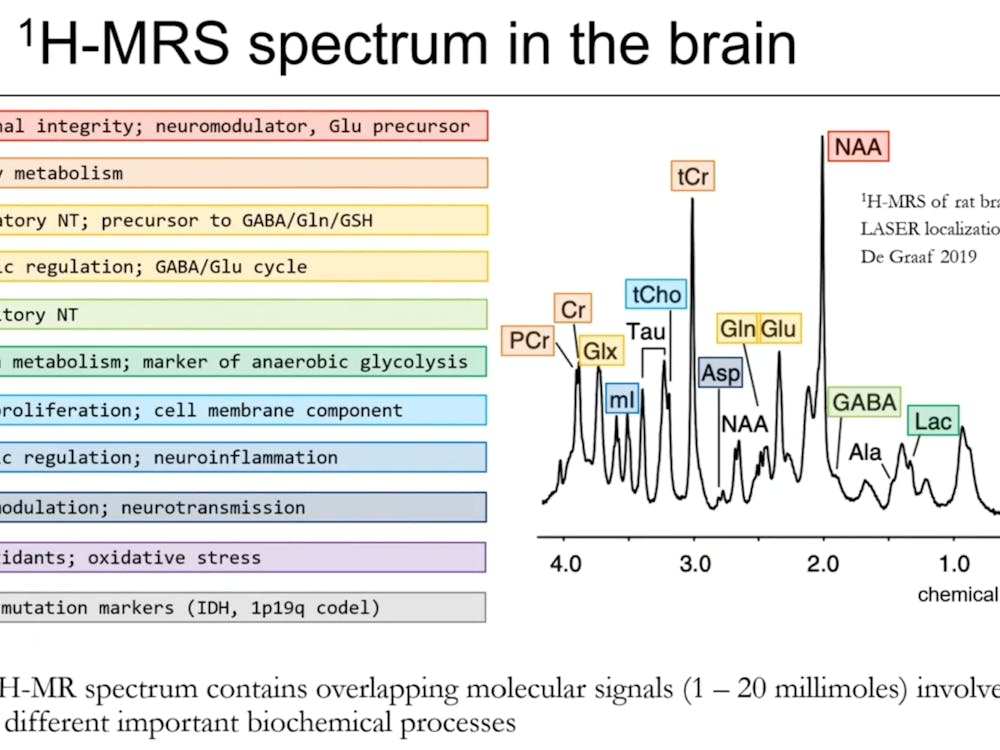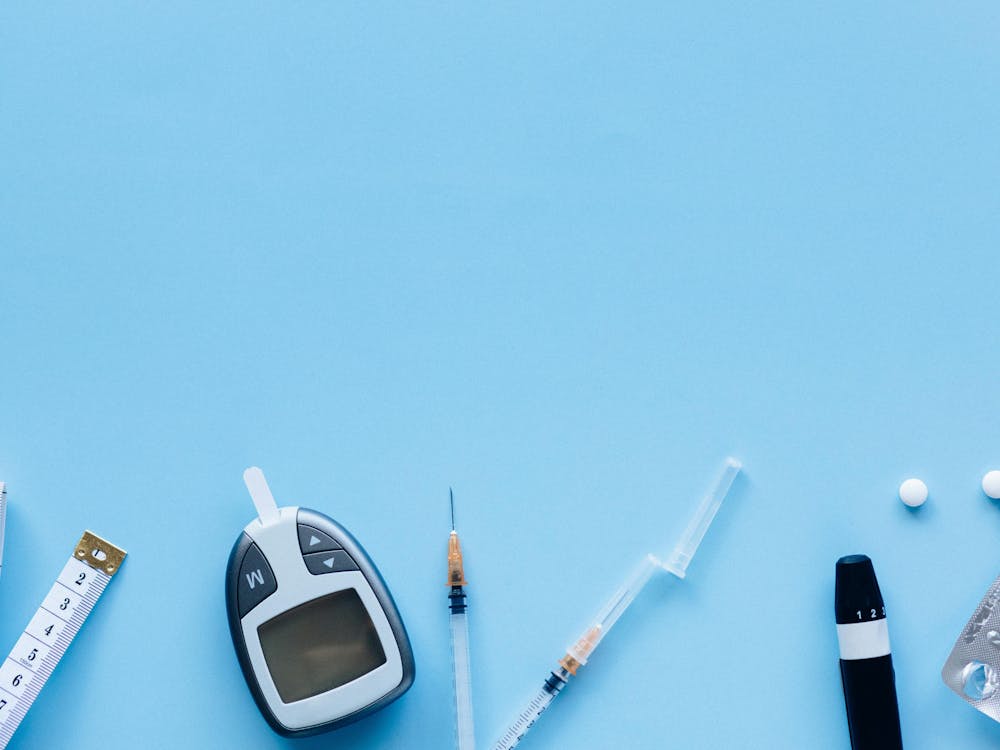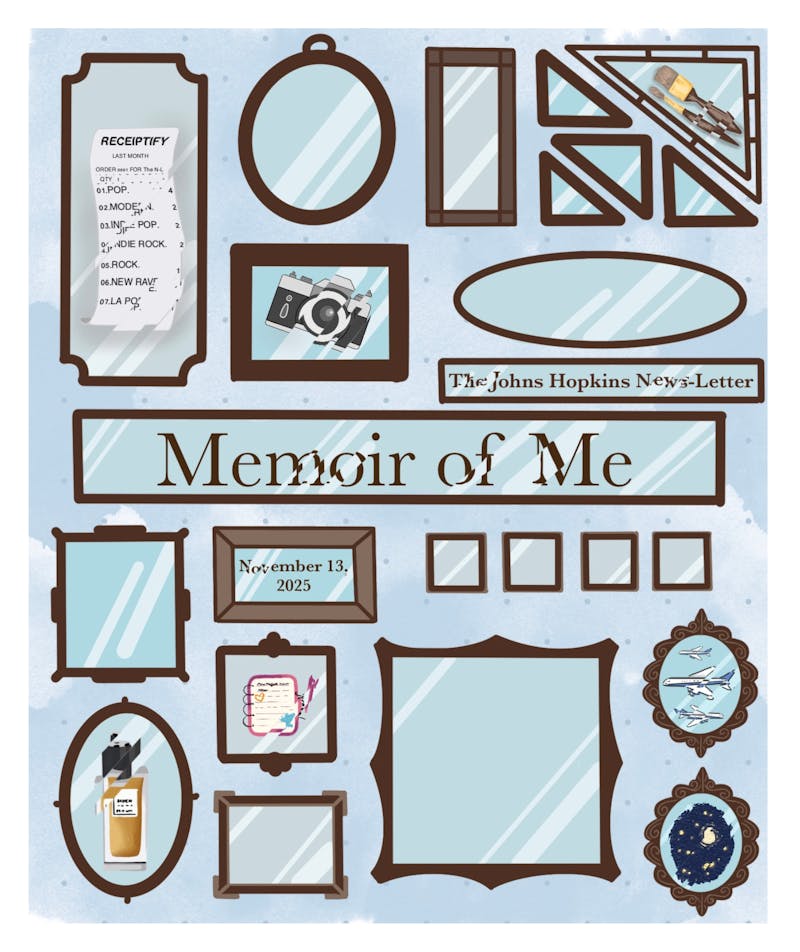
During the COVID lockdown in his gap year at the Technical University of Munich, Hopkins senior Alexander Kim started development of what would become the haptic communication device. He is currently working toward a combined Bachelor’s in Mechanical Engineering and a Master’s in Robotics, and he is in the late stages of patenting his device through Johns Hopkins Technology Ventures (JHTV). In an interview with The News-Letter, Kim described his journey developing his idea and the patent process.
Kim separates his project into three parts: the hardware, the software and the novel communication protocol that allows users to translate haptic feedback into words. The hardware consists of two compression straps worn on the legs, each containing three haptic motors with their supporting electronics. These vibrate in different combinations that represent letters or sounds, depending on the version of the protocol the user prefers.
When talking about the case where a user might want to use the sound-based version, Kim said: “Each combination of buzzes is associated with a certain sound I'm making when I talk. Let's say I wanted to send you the word ‘hello.’ Instead of sending you the letters ‘H, E, L, L, O’ individually, I could send you representations of the four sounds that make up the word (‘H,’ ‘Aah,’ ‘L,’ ‘Oh’). So those are just two different ways to communicate.”
His journey was shaped during his freshman year, when he attended a presentation by Daniel Kish, a visually impaired advocate and expert in human echolocation. After the talk, Kim had a brief chat with Kish where he explained his idea and received feedback on the viability of such a device in the visually impaired community. Kish was excited by the idea, but he stressed the importance of keeping the community involved throughout the design process.
As of 2025, around 5 million people in America report a level of vision loss. Common methods of communication include screen readers, Braille and speech-to-text software. Haptic technology is seen as an emerging tool, not only for VR and gaming but also for the visually impaired community.
“I realized, ‘Hey, I might be able to use [my device] for the [visually impaired] community.’ I gave him a quick run down and obviously, it was pretty early on, but he was like, ‘Yeah, sounds cool. Go for it.’”
Kim’s next steps were to talk to professors, including Constanza Miranda, an associate professor in the Department of Biomedical Engineering and the assistant dean for faculty undergraduate mentoring in the Whiting School of Engineering, who provided Kim with advice on how to run a design project. In his sophomore year, Kim recruited his friends Vara Gunananthan and Brock Manz to participate in the Pava Marie LaPere Center for Entrepreneurship’s Spark competition to raise money for his prototypes, allowing him to buy better materials such as microprocessors or advanced haptic motors. They ended up winning the competition.
Kim also credited Jeremy Brown, an assistant professor in the Department of Mechanical Engineering, and his Haptics and Medical Robotics Laboratory for giving him the opportunity to work with sophisticated equipment and providing deep technical feedback. These resources eventually led to Kim making advanced prototypes in his junior year.
“I basically went up to [Dr. Brown], and I said, ‘Here’s my idea… Is it okay if I use your lab to work on it?’ He said, ‘Yeah.’ Although he didn’t give me any funding, he gave me access to his space and all his tools, which let me actually build something great. I had access to fancy equipment that I could solder with and put stuff together.”
With Miranda’s guidance on initiating conversations and connecting with his users, Kim managed to consistently allocate time to speak with members of the visually impaired community, showing them his product and gaining valuable feedback from the people his technology would be benefitting.
“The first time I designed something and I demonstrated it for a visually impaired person, they told me that a bunch of the features didn’t make sense... You should talk to the person you’re designing for — that’s a pretty valuable lesson I learned.”
Currently, Kim is working to obtain a patent for his device through the JHTV office. The office provides patent lawyers that communicate with the United States Patent and Trademark Office and allows the University to obtain a financial stake in the product, which allows students to obtain a patent in a more streamlined and cost-effective fashion. JHTV also assists with licensing on behalf of the students.
Reflecting on the entire process, Kim’s favorite aspect was the excitement of creating something original.
“When you’re in school, you're getting taught a lot of stuff. Somebody invented that. Or it’s someone's theorem. To me, that’s so cool. There were a couple things I did during the process where it was something new. There's nothing like it — that's awesome. Making something completely original and giving a little new nugget of knowledge to the human race.”
Kim also offered advice to aspiring inventors.
“First, do something you’re passionate about. When you’re doing your own project, it has to be something that you’re super passionate about since there’s no expectation to finish it — there's no one else holding you accountable except you. The second thing is, things take a lot longer than you think. I didn't think I'd be working on this for four years straight… For the first three years, there was no guaranteed outcome and something was gonna happen. But you still just got to go with it.”
Research on the Record spotlights undergraduate students involved in STEM research at Hopkins. The goal of the column is to share reflections on the highs and lows that Hopkins students experience in their contributions to undergraduate research. If you are an undergraduate researcher interested in being profiled, reach out to science@jhunewsletter.com.





